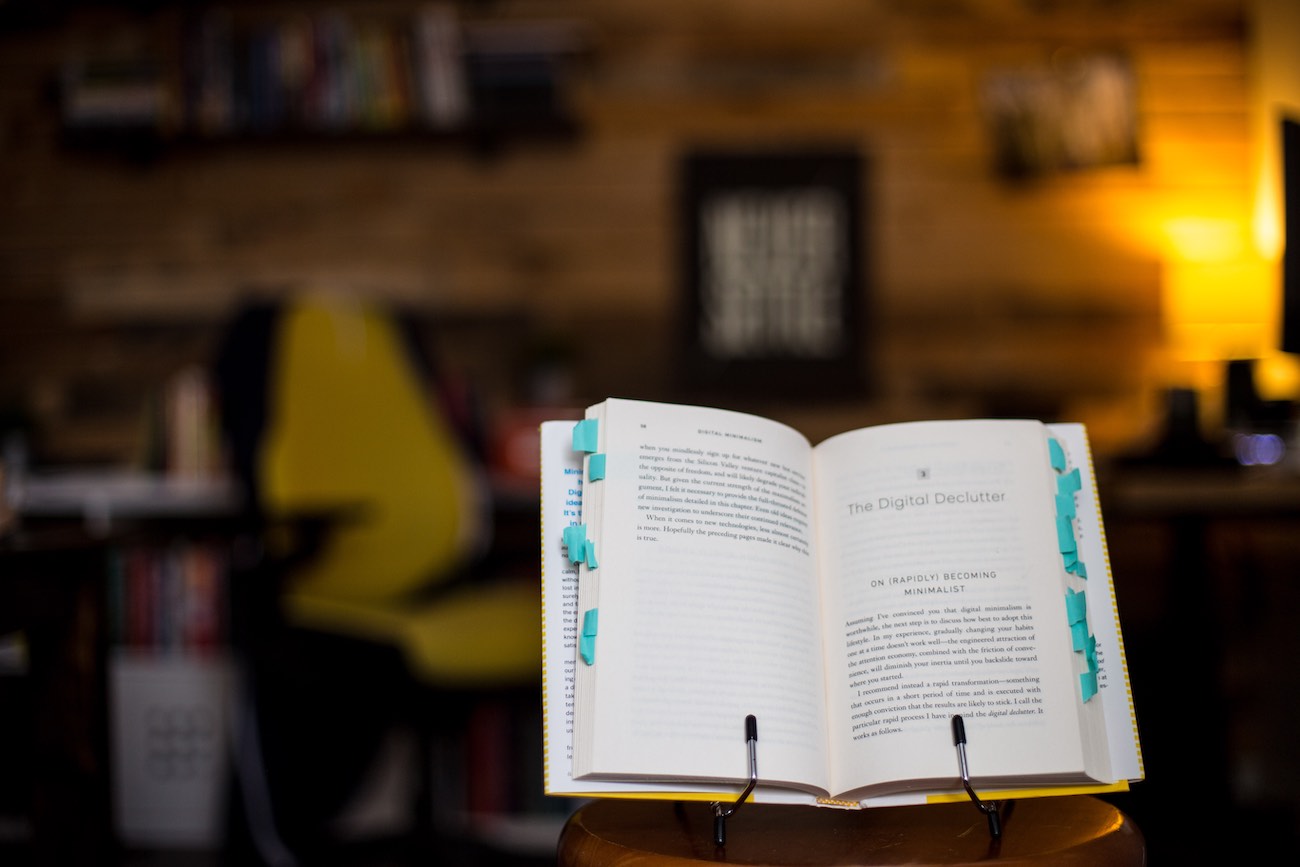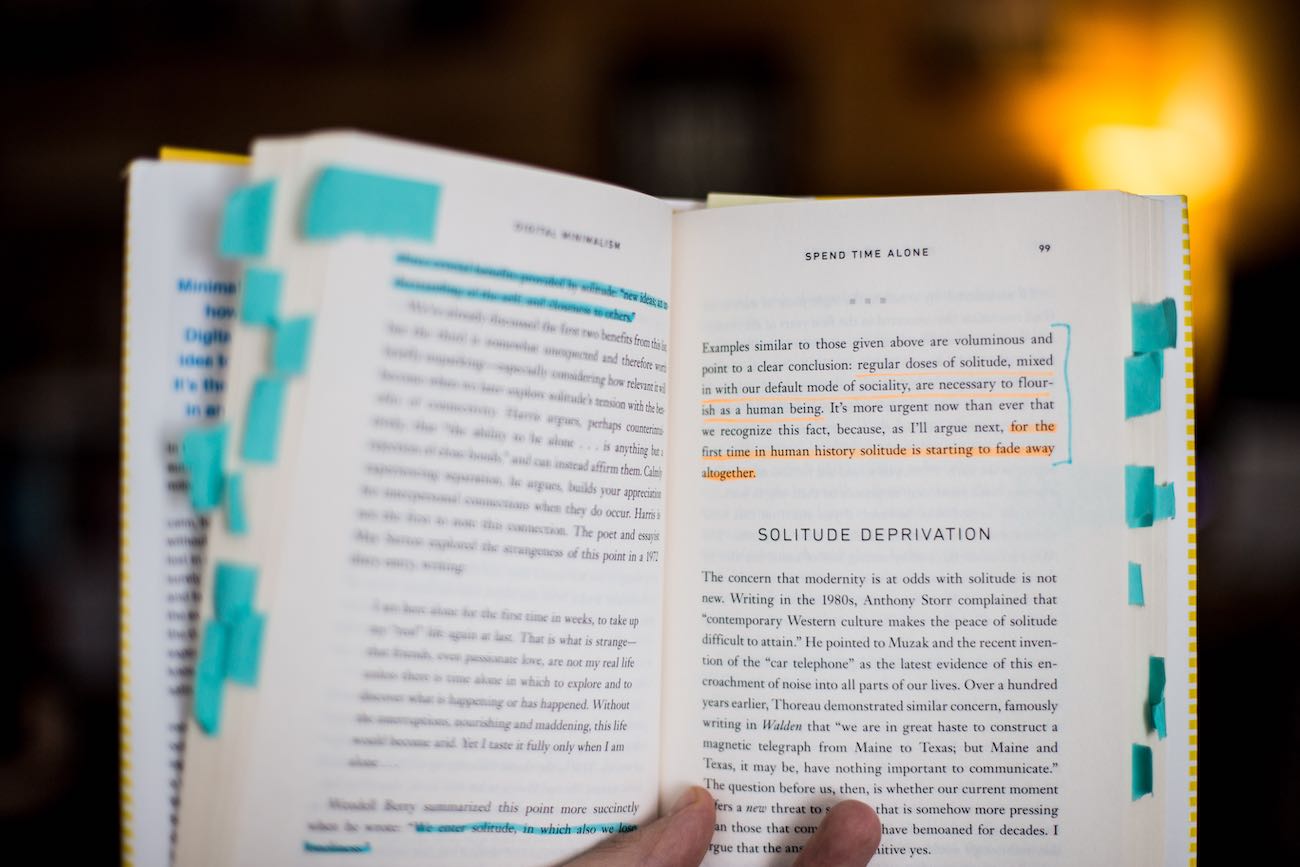3 Steps to Simplify Your Apps
In this golden age of technology, it is quite easy to get sucked in and find yourself knee-deep in too many apps, RSS feeds, and inboxes.
If you’d like to get a better approach to how you use your apps and devices, here are some key takeaways from Cal Newport’s book, Digital Minimalism.
1. Philosophy of Technology Use
Just as we need a philosophy toward the types of food we eat and why, so too do we need a philosophy regarding the types of technology we embrace and use.
Someone that avoids sugar or fast food isn’t anti-food. Just as someone that refrains from engaging with certain software or social services isn’t anti-tech.
We’ve all seen the catchy headlines promoting life hacks to get your smartphone usage under control. For lasting and meaningful change to occur, we need more than life hacks or quick tips. We need a technology philosophy that aligns with deep rooted values.
A technology philosophy is nothing more than a manifesto of how and why we use technology. If our technology use isn’t linked to our value system, then there will be no anchoring component to what types of technology we use and how often.
For simplicity, we could use Cal’s definition of digital minimalism as a working technology philosophy.
Digital Minimalism
A philosophy of technology use in which you focus your online time on a small number of carefully selected and optimized activities that strongly support things you value, and then happily miss out on everything else.
Feel free to adopt this or come up with your own. In the end, you want to have a statement of sorts to come back to when evaluating the technologies you use. It should give you a sense of true north with regards to how you use tech.

2. The Digital Declutter
It can be hard to obtain a sense of clarity around our technology use. When stuck in the cyclical patterns of checking inboxes, it can be a challenge to disentangle ourselves enough to define what our essential technology really is, which is what the digital declutter is for. More or less, it’s a digital detox that leads to lasting change.
The digital declutter removes all the extra (optional) technologies we’ve stuffed our life full of long enough to break free of their addictive nature. Then, as we begin to experience the relief of mental margin, we fill the vacant time with activities that bring lasting satisfaction.
Cal outlines the declutter process well in Digital Minimalism. (I highly recommend reading at least chapter 3 on The Digital Declutter)
The Digital Declutter Process (From Digital Minimalism)
- Put aside a thirty-day period during which you will take a break from optional technologies in your life.
- During this thirty-day break, explore and rediscover activities and behaviors that you find satisfying and meaningful.
- At the end of the break, reintroduce optional technologies into your life, starting from a blank slate. For each technology you reintroduce, determine what value it serves in your life and how specifically you will use it so as to maximize this value.
There are a couple things of importance in here.
-
The point of the digital declutter is lasting change on the other side. From the experience of hundreds that have gone through the process, those that dropped out early were those that treated the declutter simply as a break from technology. The declutter removes the cloudiness of technology so that we can decide which ones we actually want to keep after the 30 days is finished.
-
Another key to succeeding the 30 days is to intentionally decide what you will do during the declutter to fill the void. If you don’t have an activity to fill the empty space, you are more likely to not finish the declutter. Make a list of activities you will turn to instead of the optional technology you are forgoing.
To summarize, the digital declutter is a tool meant to aid the process of selectively weeding out unnecessary technologies that do not align with our technology philosophy. The digital declutter will not be effective if viewed as a break from technology. It is meant to lead to change.
3. Solitude Deprivation
Finally, the most fascinating section of Digital Minimalism for me was on the topic of solitude.
The smartphone moved us into a truly unprecedented era of human history.
It’s not just the power of the internet in our pockets, and not just the ability to communicate with people on the other side of the planet. But for the first time in human history, we have the ability to completely remove solitude from our daily existence. A fundamental element of being human for thousands of years is now being threatened to near extinction — the ramifications of which we are only just beginning to understand.
Solidtude Deprivation
A state in which you spend close to zero time alone with your own thoughts and free from the input from other minds.

To get a clearer grasp of the implications of this change, I highly recommend reading chapter 4 (Spend Time Alone) of Digital Minimalism.
The ongoing research behind the importance of solitude is compelling, but in short: “Regular doses of solitude, mixed in with our default mode of sociality, are necessary to flourish as a human being.”
This isn’t just an optional luxury of life we’ve endangered. Moments of solitude are essential to our human experience. By removing it altogether we are altering fundamental aspects of the human brain — not to mention causing anxiety and stress like we’ve never seen before.
🚀 Upgrade: Boost Your Habits
Introducing the new Focus Boosters.
Inside our popular Focus Club membership, join us for the Habit Building challenge (a.k.a. “Booster”). You’ll find out how to make simple changes that will make your daily life better, remove distractions, and create a new simple habit.
Membership Includes: Simple Habits Course, Habit Tracking Templates, Digital Planner, Private Chat Community, Monthly Coaching Calls, and much, much more…
